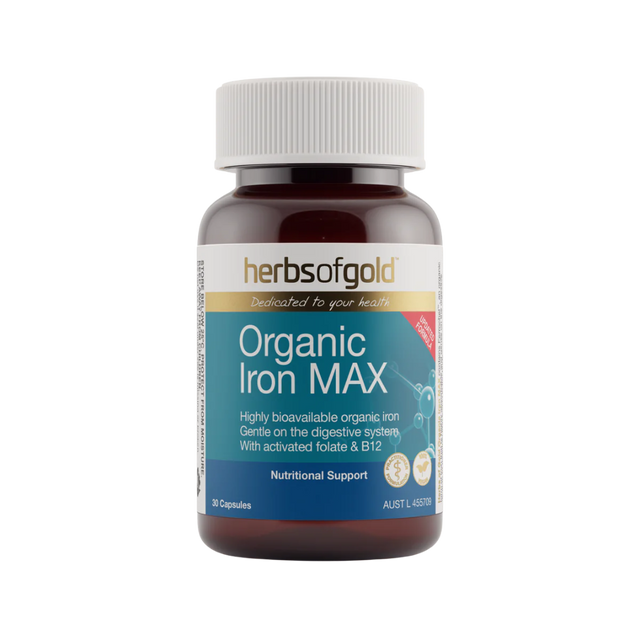Michael Dunstan - UTMB: Ultra-Trail du Mont-Blanc
UTMB. Ultra-Trail du Mont-Blanc.
Four letters that may mean nothing to some, but mean the world to many trail runners.
The Ultra-Trail du Mont-Blanc is dubbed as the pinnacle of 100 mile mountain trail racing. A place where humans from all over the world unite in Chamonix in France, to shoot their attempt at completing the 176km with 10’000m elevation loop (for context that is more than going from sea-level to the summit of Mt.Everest in height up and down). The course follows the Tour du Mont Blanc which is an iconic hiking loop around Mont Blanc, the highest mountain in the Alps and Western Europe, with a summit of 4,809 meters.

The race incredibly journeys through three countries; France, Italy and Switzerland in an atmosphere that is akin to the Super Bowl of mountain running. Streets crammed with spectators, supporters, loved ones, crew and more. It’s a race that not only pushes the body and mind to the limit, but a race where the human spirit truly shines. For the elite runners, it’s one of the most competitive races on the planet, where you can test yourself against the best in the world.
The feat of finishing the race is a superhuman accomplishment that everyone should be incredibly proud of. You might be thinking, why would anyone do such a race? If you asked most participants, I think they’d tell you it’s about going beyond the limitations of the mind, of the perceived limitations of the body and finding something beyond all of it that just keeps us going. To traverse through the grandeur of the alps, to be in awe of something so much larger than ourselves. To experience the powerful highs and lows of life, in such a short period of time, be it 20 hours for the leaders, or multiple days for the middle and back of the pack. It’s also the incredible journey that it takes to train to be ready for such an event; the places you explore, the people who you share the experience with, the hurdles and long training hours endured.
UTMB 2025: My Debut Lap of Mont Blanc
This August 29th, I’ll be racing UTMB for the first time. It’s a dream goal I’ve slowly worked towards since 4 years ago when I first started trail running. Since then I haven’t missed a year of watching the live-stream, feeling inspired by the accomplishments of others, and also shocked at the unpredictability of a race that humbles even the greatest in the world. That is the beauty of the mountains, and ultra running; nothing is guaranteed no matter how well you prepare, or who you are, there is always an element of the unknown.
At the time of writing this, it’s early August and I’ve spent just over 10 days in the French Alps. I’ve explored half of the course, and then relocated to Tignes to train at altitude for 25 days prior to the race. It’s definitely dawned on me that these mountains are no joke, this is going to be a serious challenge with so many variables; heat, altitude, the elevation gain and loss, planning and managing nutrition, plus more.
When I think about the whole picture at once, I feel a little overwhelmed and honestly slightly scared, and have been constantly reminding myself to just be present with the very training run I’m in, and the task at hand right now. Once the run is done, switch off and focus on resting, enjoying other parts of the day, eating well and just enjoying the unique opportunity to experience a new part of the world, its ways of living and people.
The mountains I’m training in at Tignes are some of the most beautiful trails I’ve ever experienced, and I want to be able to soak that up for the incredible experience it is, completely independent of the race.

Preparing for UTMB: Training and Fuelling
For an event like UTMB, it requires a unique set of skills to be practised in training to give yourself the best chance at completing the loop possible. For me personally I believe they are:
- Building the fitness and physical resilience to withstand 176km and 10’000m of climbing and descending.
This means targeting steep weeks of running at home in the Blue Mountains of NSW. I was sitting between 6000-9000m of climbing per week, with a fair amount of easy bike volume supplementing my running. I headed to Europe in late July where I’ve transitioned to peak weeks of up to 29 hours of running and approximately 13’000m of climbing and descending per week to condition the body. This large amount isn’t necessary just to complete the loop, but will hopefully give me the best chance to do so to the best of my ability for this stage of my running journey.
- Having a strong and practiced fuelling strategy, with back-up plans that will enable you to intake enough energy to complete the demanding task, to represent the fitness you’ve built in training.
Spending long training days and session days replicating how you plan to fuel in the race to trouble shoot any issues that arise. Practicing the timing and amount of fueling, ie, is it better for you to fuel while climbing hard or when taking a downhill more easily and getting some recovery? Finding out how your body responds to certain fuelling while on mountainous terrain. How does your stomach handle eating solid food whilst at higher altitudes when running?
These are things I’ve been practicing so far, and in particular I’ve found that stomaching solid bars and fuel seems to work better on longer steeper climbs, where I’m moving more slowly. It seems to work particularly well when I pull back the intensity intentionally whilst eating, which takes discipline, especially if your competitors are pulling away and you’re focusing on refuelling. I believe it’s a time sacrifice that will pay dividends later.
Some of the bars I’ve been training with have been the Naak Ultra waffles and energy bars and the 226’ers banana and ginger race day bars. The waffles and the banana and ginger race day bars seem low risk to me, they go down easy, but are lower in fat and calories. Sometimes in these long races I find that without having something more dense in calories and fat, I can feel light headed and dizzy if I don’t eat solid food and am relying solely on drink mixes.

- The ability to move and fuel at altitude (long stretches if the race occurs above 2000m, and while not 'high' altitude, at the race intensity it can pose many complications)
One hurdle for Australians heading over to race UTMB, is that most of us don’t have access to altitude to get the body adapted to the demands of exercising at altitude. The lead-up to this race coincides with our Australian winter, and for instance this year there is a lot of snow up high meaning that it’s hard to get any quality training in at altitudes of 1700 - 2200m in Australia right now.
There’s a few ways to combat this; find a way to simulate altitude while in Australia, ie, rental hypoxic generators to either sleep or train with, and/or head to Europe earlier to train. Potentially stay somewhere at higher altitude in the lead-up to adjust to life at altitude, whilst being very mindful that this is another stress on the body, and does limit your ability to train with quality.
Whilst I’m fortunate enough to be able to spend 25 days at altitude training in the lead-up, to prepare for this I also decided to sleep in an altitude tent for the last 3-4 weeks before leaving Australia in an effort to try to adapt a little before training overseas. Initially this was quite stressful for the first week or so, but later felt quite comfortable.
I’ve now been sleeping at 2100m in Tignes and training up to 2800m for the last 6 days now and feel as though I’ve experienced less stress than previous times acclimatising to altitude when I wasn’t using hypoxic tools prior to arriving. The afternoon combination of warm days and altitude is tougher running than usual, but feels manageable. Excited to see how the rest of the block unfolds! This is all relatively new territory for me.
- Mental training; figuring out which strategies you will use during the race to stay focused. For me, this is centred around mind-fullness practices, using different anchors such as the sensation of my hands and breath to be present with and stay relaxed.
The mental side of these races is arguably just as important as the physical. Find ways to manage your levels of stress in the lead-up, and also ways to reduce stress while training! Our best running often eventuates from a relaxed state of presence.
Ironically, my peak training weeks usually coincide with a fairly fuzzy feeling brain due to the high volume. Lack of motivation, lack of desire to race, these things definitely arise in these big weeks. When this pops up, I always remind myself that it’s part of the massive training toll, and that in the two week taper, to continue to double down on the meditation and rest.
Usually by race week, the drive, focus and desire to race hard is there right at the perfect timing!
If you want to try a tool, try the Headspace competition pack on the Headspace app.

Fuelling:
Fuelling lets us unlock our full potential! Here’s some of the ways I’d fuel in training as a guide that might help you. I will always ensure I’ve eaten a solid amount of carbs prior to my exercise, and realistically almost never train in a depleted state:
Running:
< 60mins (easy / recovery intensity): electrolytes and water
< 90mins (easy / recovery intensity): electrolytes and water, but if feeling tired or a session is the next day, I would fuel with at least 50g carbs an hour also.
< 90mins (hard / session intensity): 100g carbs an hour, plus electrolytes. Aiming for 500-800ml of liquid per hour. I find this helps recovery from hard efforts greatly.
Typically I’d fuel the carbs with a drink mix (ie, Tailwind) and perhaps a SIS Beta Fuel Gel or Beet It 30g nitrate gel.
> 2 hours (easy / recovery intensity): I’d aim for 50-75g carbs per hour, plus electrolytes and adequate fluid intake. If going longer than 3hrs I’d start to eat a solid bar every 2-3hrs also.
> 2 hours (moderate or solid long run intensity): 100g carbs per hour, a mixture of drink mix and solid food (ie, 226’ers bar, Naak bar, Skratch bar, bananas, Styrkr Rice Bar).
This is my race day strategy that has worked for me in the past, and I also add in real food such as rice, potato, watermelon, oranges, jelly sandwiches. I’d encourage you to only try real foods on race day that you eat in everyday life, so you know your stomach is used to it, and it doesn’t cause you any doubt/anxiety mentally about questioning your decision to eat it.
For training, some practical ways to help fuel intake timing is to set up timers on your watch. For instance, my Garmin beeps at me every 15mins saying ‘eat’ which reminds me to either drink or consume my solids. Figure out what kind of timing or tools can assist you to fuel steadily!

Recovery
Large training volume is only beneficial if we are recovering from the stimulus we are giving our body. Since joining the Aid Station team, I’ve tried many recovery products to see what works well and feels good.
Some of my favourite basic recovery products are:
Tailwind Recovery:
A swift way to get back in quality protein, carbs, electrolytes and fats post workout. Just mix with water on the drive home and then get stuck into some real food once home, you’re already ahead!
Electrolytes:
Seems so simple, but I believe for years I was not hydrating properly and my body and brain was suffering as a result of it. I love the Sodii electrolytes, and drink them all day long when the training volume is up.
Pillar Magnesium:
Better sleep, and less soreness upon waking up first thing in the morning!
Pillar Immune C:
When overseas or around travel periods, I feel as though this product gives me peace of mind that I’m giving my immune system a good chance to be strong and healthy.
CurraNZ:
A blackcurrant supplement that truly makes me feel more efficient, able to push harder in sessions, and also recover quicker.
Modex:
In high training volume weeks, I’ll use 100ml of Modex a day for short 2-3 week periods to help increase my capability to be able to handle the stress of the training. I truly believe it’s a massive part of being able to absorb the heavy training and adapt well.
Iron:
Particularly mindful of my iron intake this block whilst training with hypoxic equipment and also at altitude!
The Final Weeks to UTMB
With just 25 days left til the race whilst writing this, UTMB is starting to feel very real and looming large. The difference with UTMB is the amount of media, hype and attention that all trail runners pay to the event. It’s this very added stress that can cripple some participant’s races, whilst others thrive on the opportunity and stage. It simply feels like a big deal, and holds so much value to so many.
While sitting on a couch, it’s easy to drift off and envision neck and neck racing and having to make these crucial decisions in the race that are make or break. But I think in the lead up it’s always important to remind yourself that there is a way you can pace yourself to reach that finish line as quickly as possible with your given abilities and skill set.
Perhaps some people will help you along the way, give you inspiration and company, but in this distance you often get the performance you have trained for; mentally and physically. The biggest task: stay present, stick to your plan, stay relaxed and calm, observe the coming and going of everything. Don’t overthink something you’ve trained so thoroughly that usually naturally unfolds without much thought in training, trust your gut instinct.
Truthfully, there’s 176km of unknown in front of everyone lining up for that race. Just to be there facing that, is a remarkable and brave achievement.
In training I’ve been humbled by the mountains, genuinely scared by rockfall areas and the risk of a thunderstorm when on a random ridge-line in a foreign French town after lifts have closed. It sounds like an irrational fear, but after nearly being struck by lightning back home in the Blue Mountains I am wary not to get complacent or naive about the real danger of these exposed, remote places.
It’s the power of the mountains, and it’s why we love this sport. It makes us feel small, in awe of our surroundings and grateful to be alive. Connected to, and a small part of something so much bigger than ourselves.
Who knows what August 29th will hold; perhaps we’ll be graced with a clear summer’s day to journey through the alps, alternatively we could have adverse weather where the traditional mountain route is to be cancelled and the dream on pause for another year or years. This has been the case for many races in 2025, mother nature doesn’t press pause for the big dance, nor does it care. It just is.
One of my favourite quotes from Headspace was something along the lines of ‘real strength isn’t found in holding everything together, but rather in being able to let go when needed’. The challenge between now and UTMB is to prepare the mind to be open to every possibility, and be ready to adapt the best you can. To let go of plans when needed, and formulate a new one.
That is UTMB, that is trail running, that is life. I can’t wait to try my best and see what happens, for as long as I am giving it 110% in this moment I will be content with whatever unfolds.
Thanks for reading, and happy trails! Get out there and enjoy the magic.
- Michael Dunstan


















